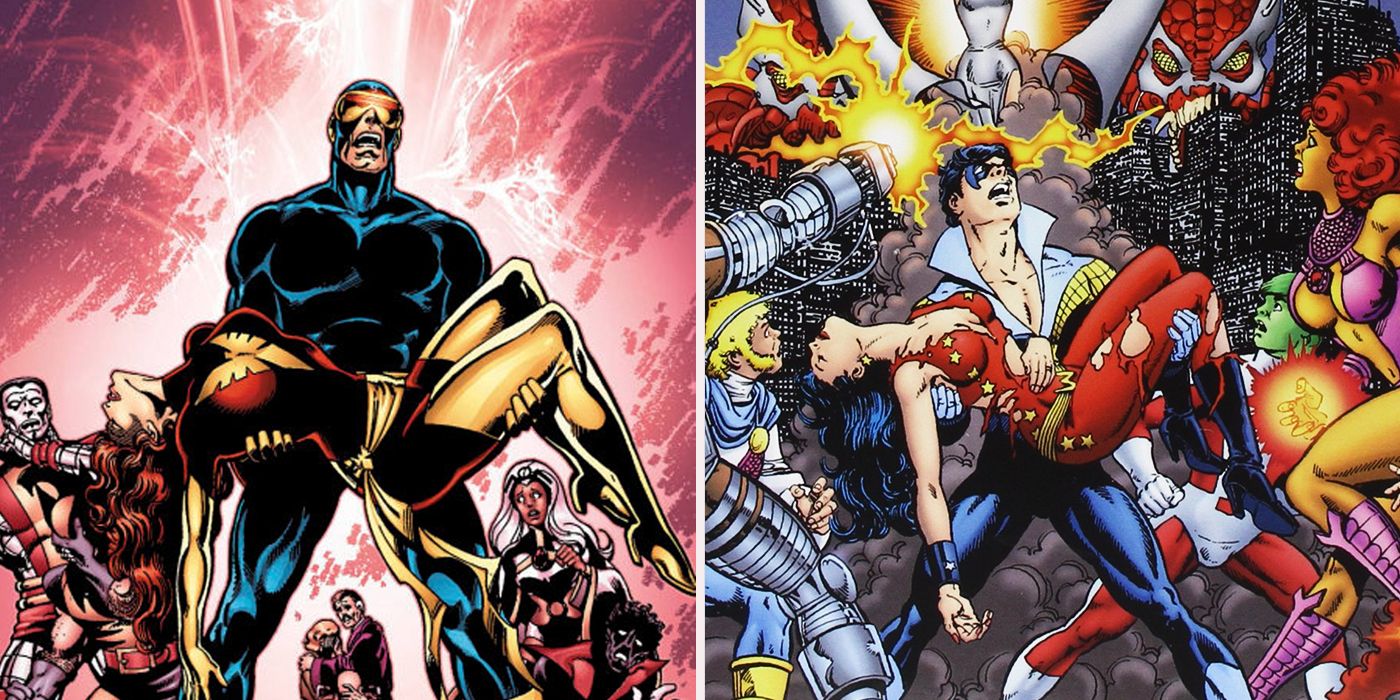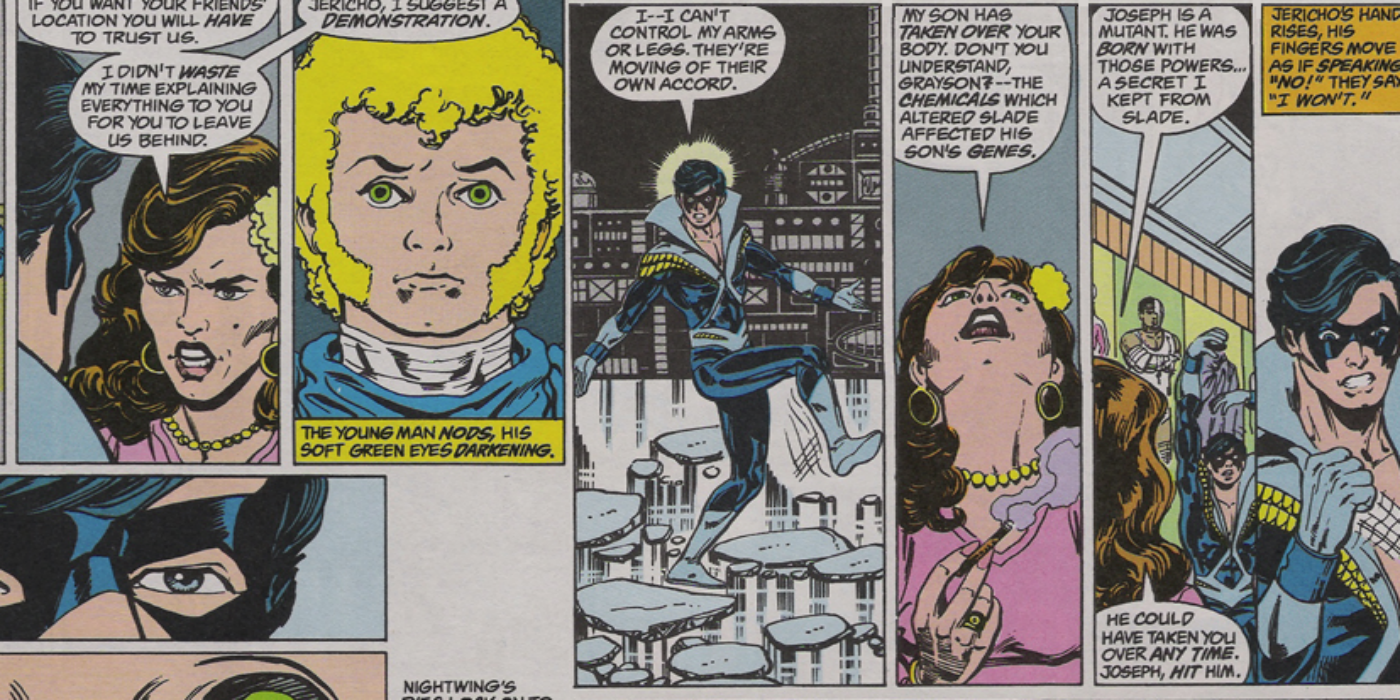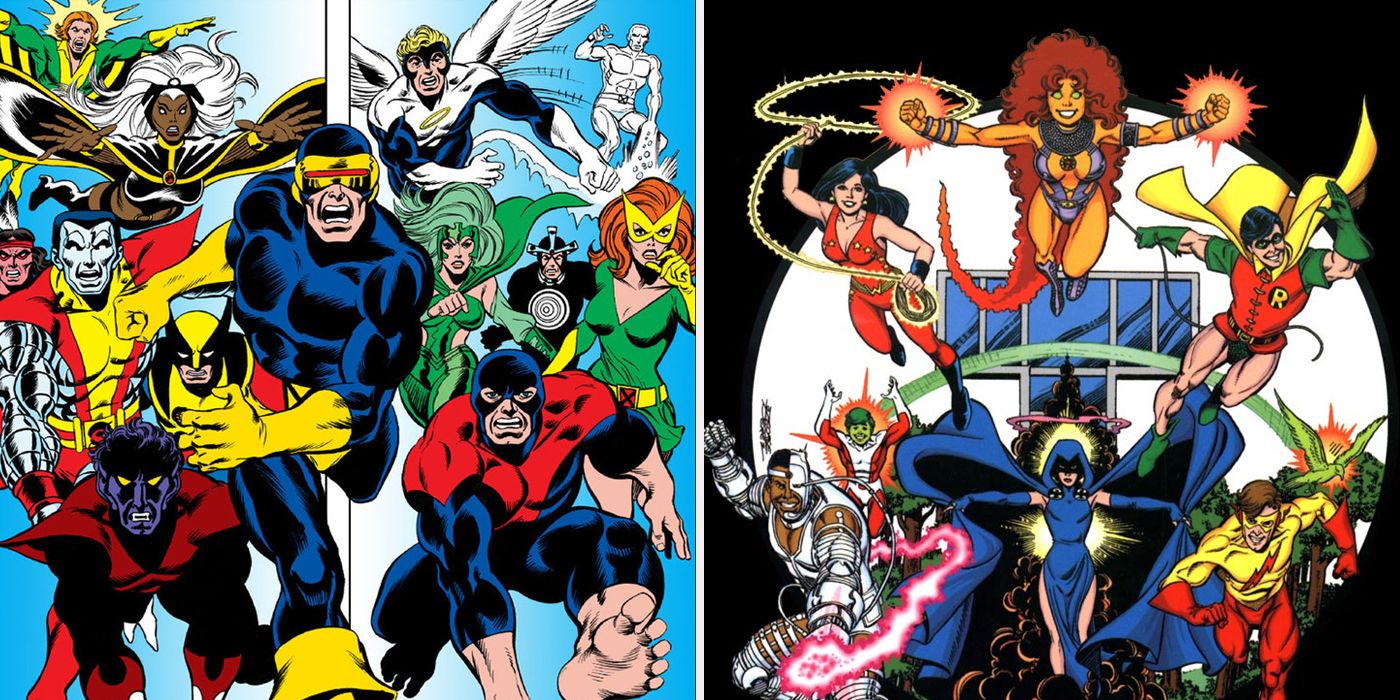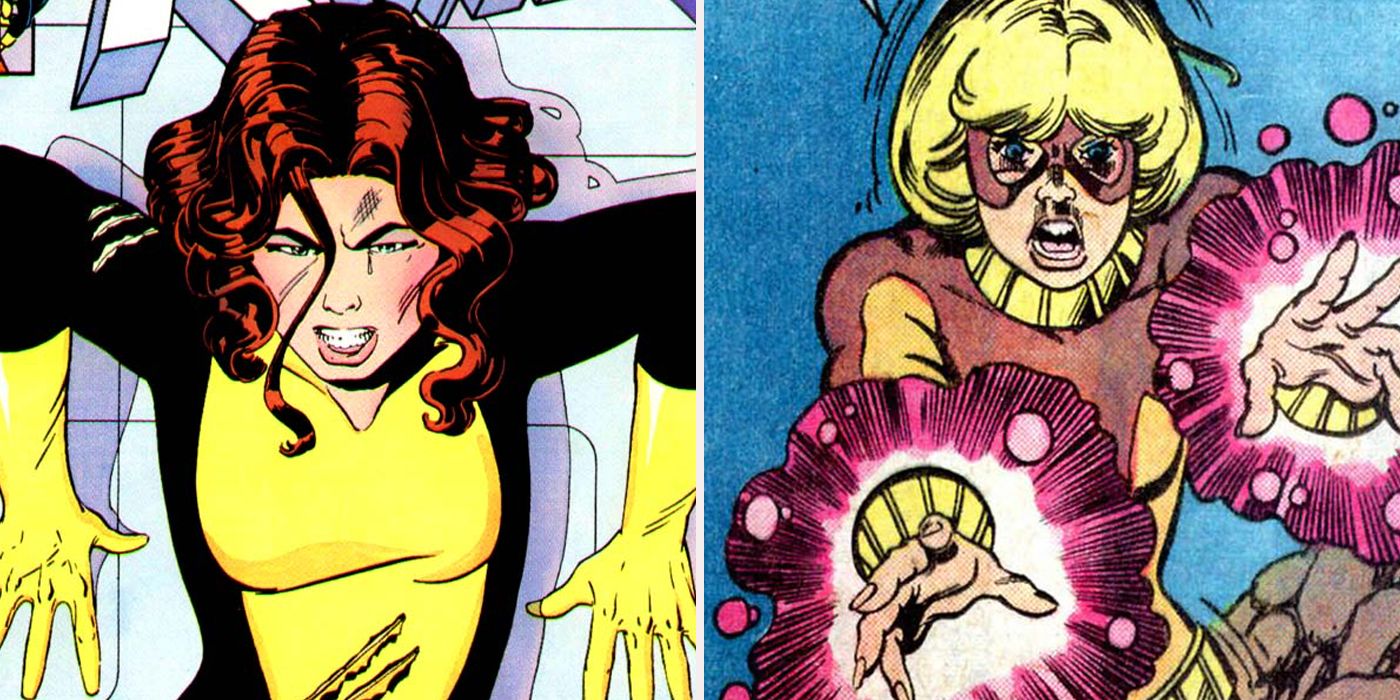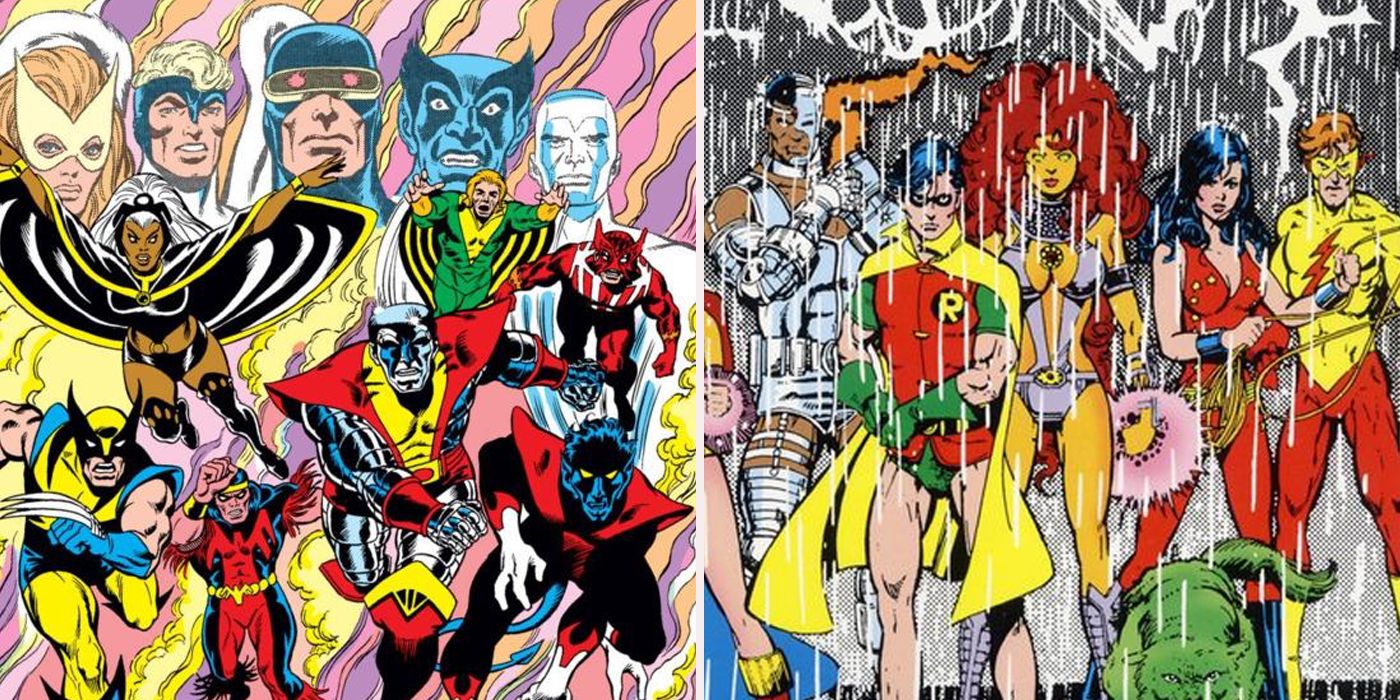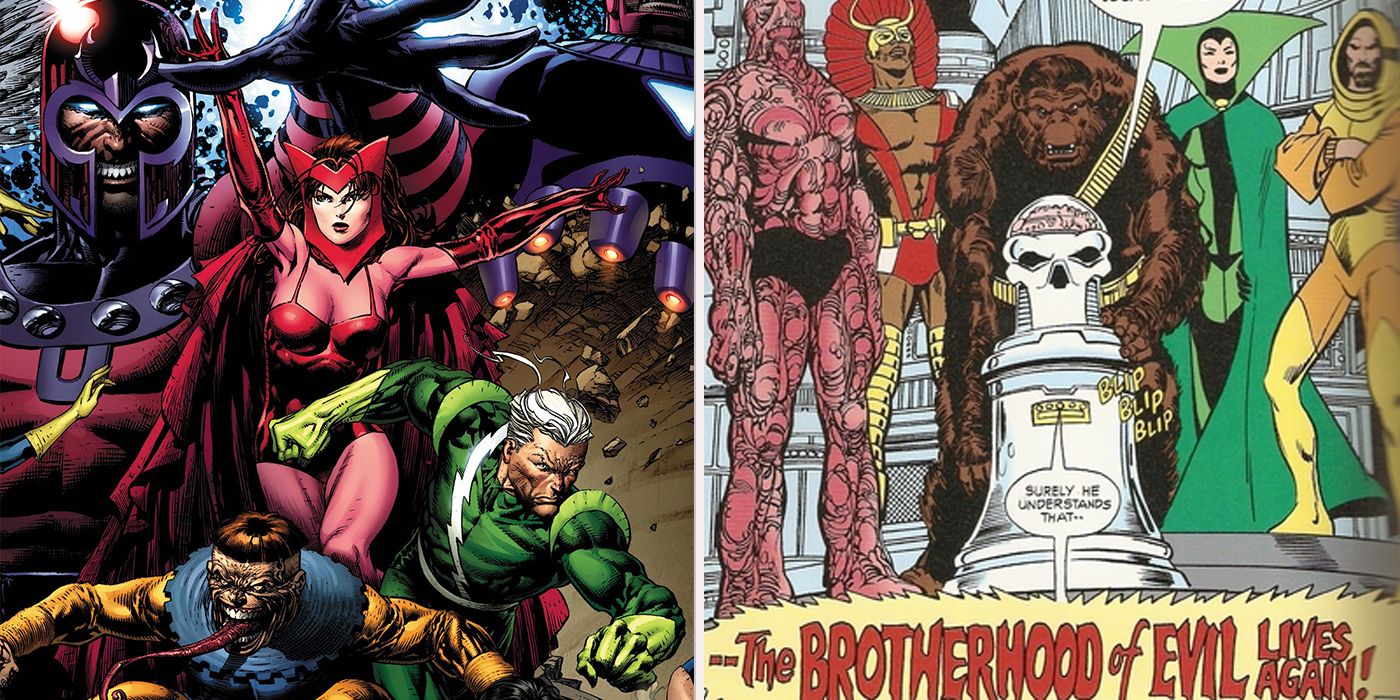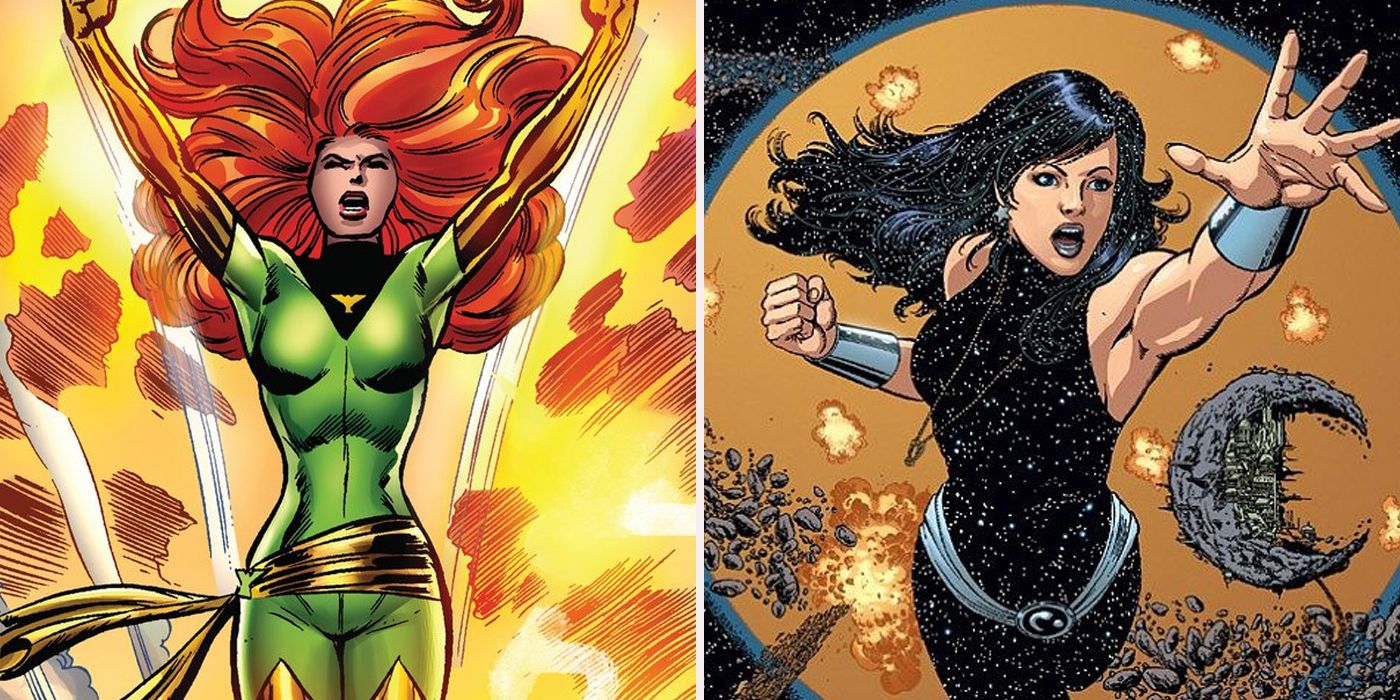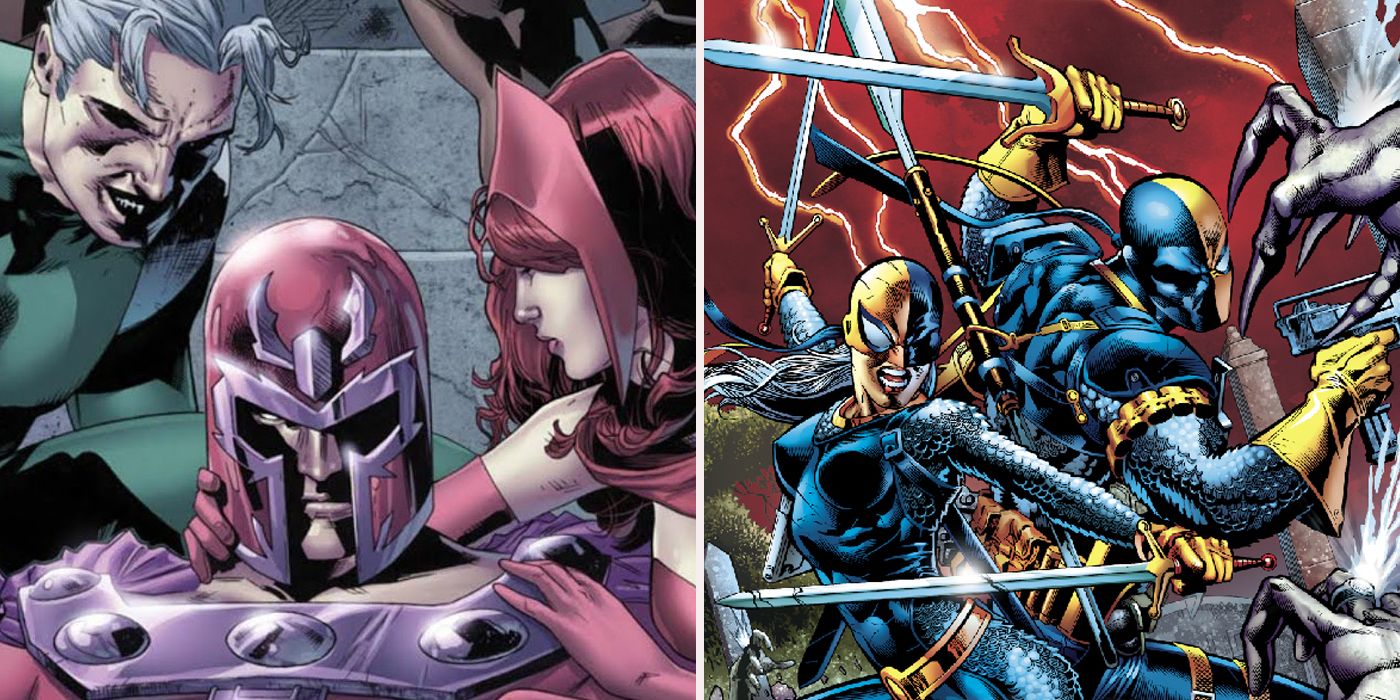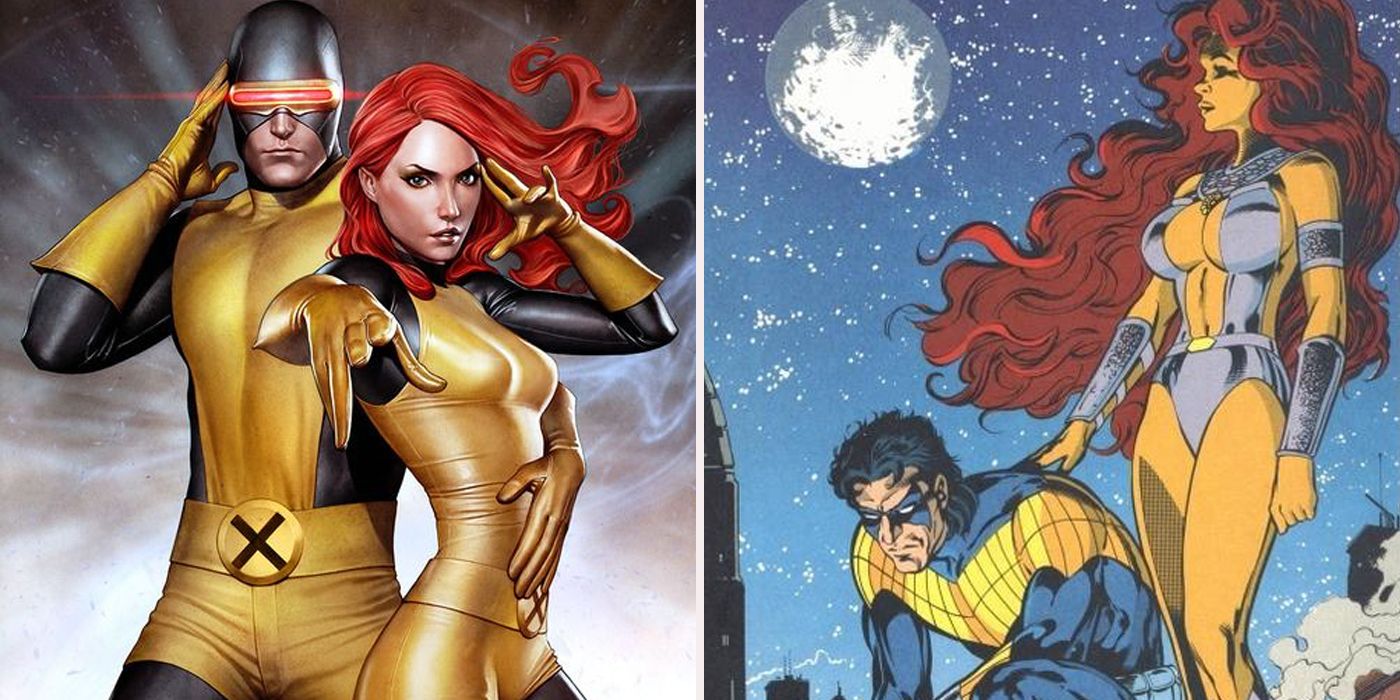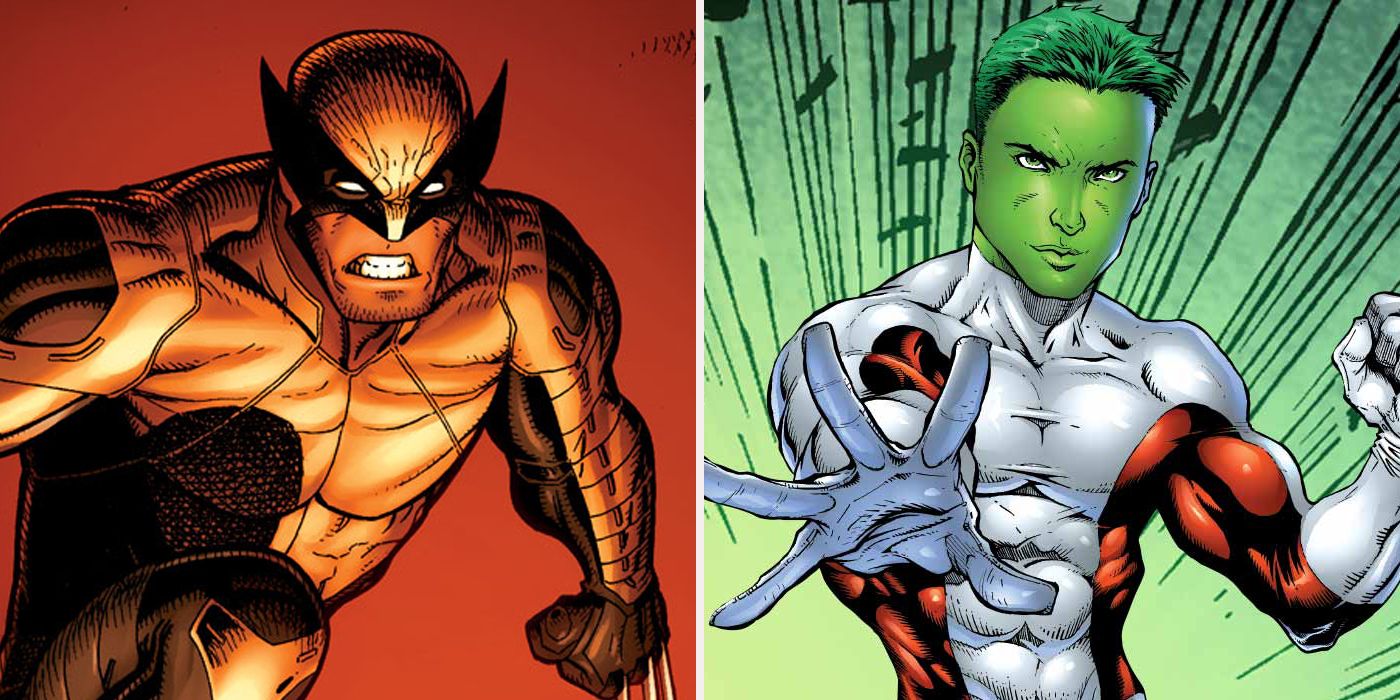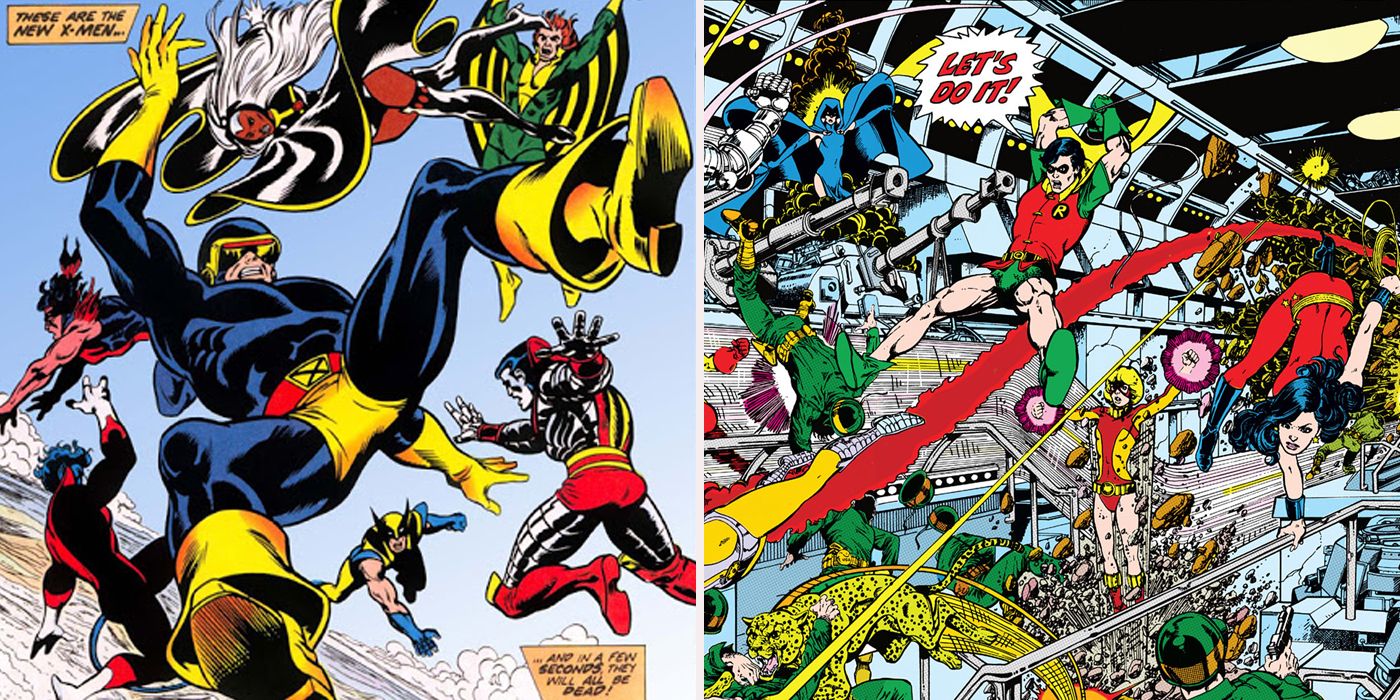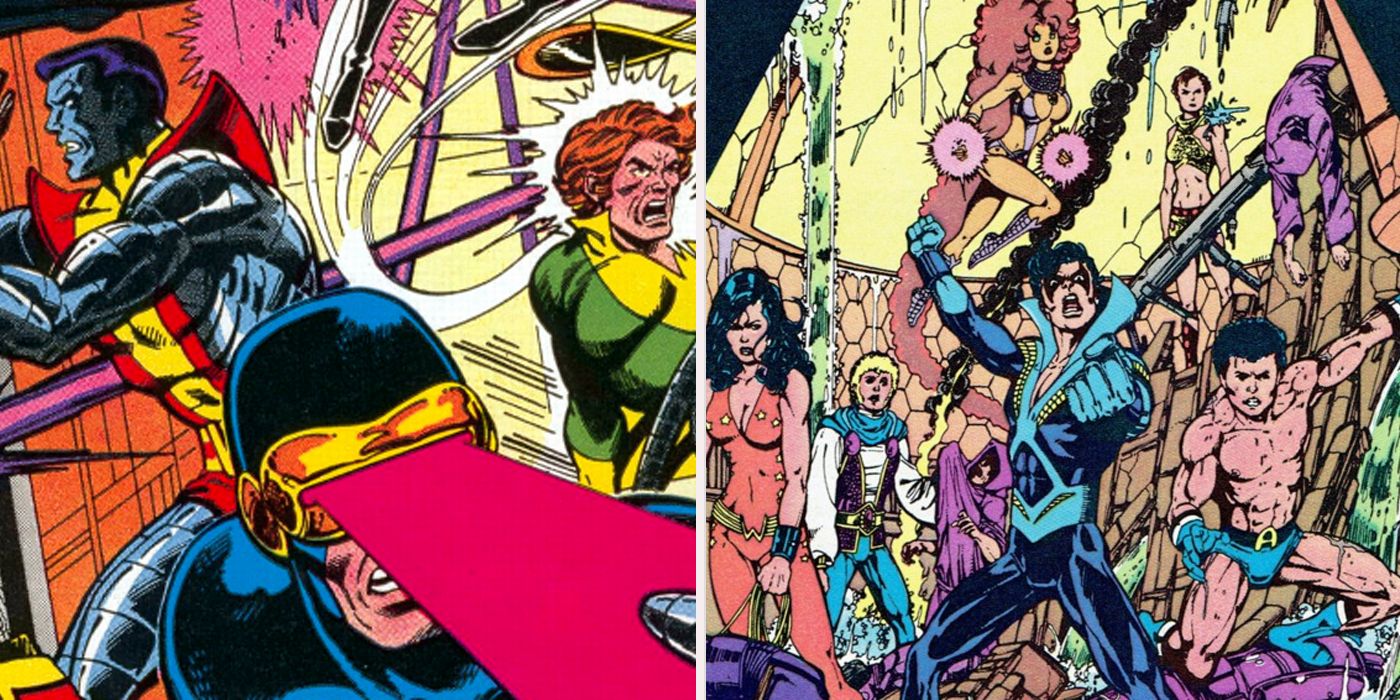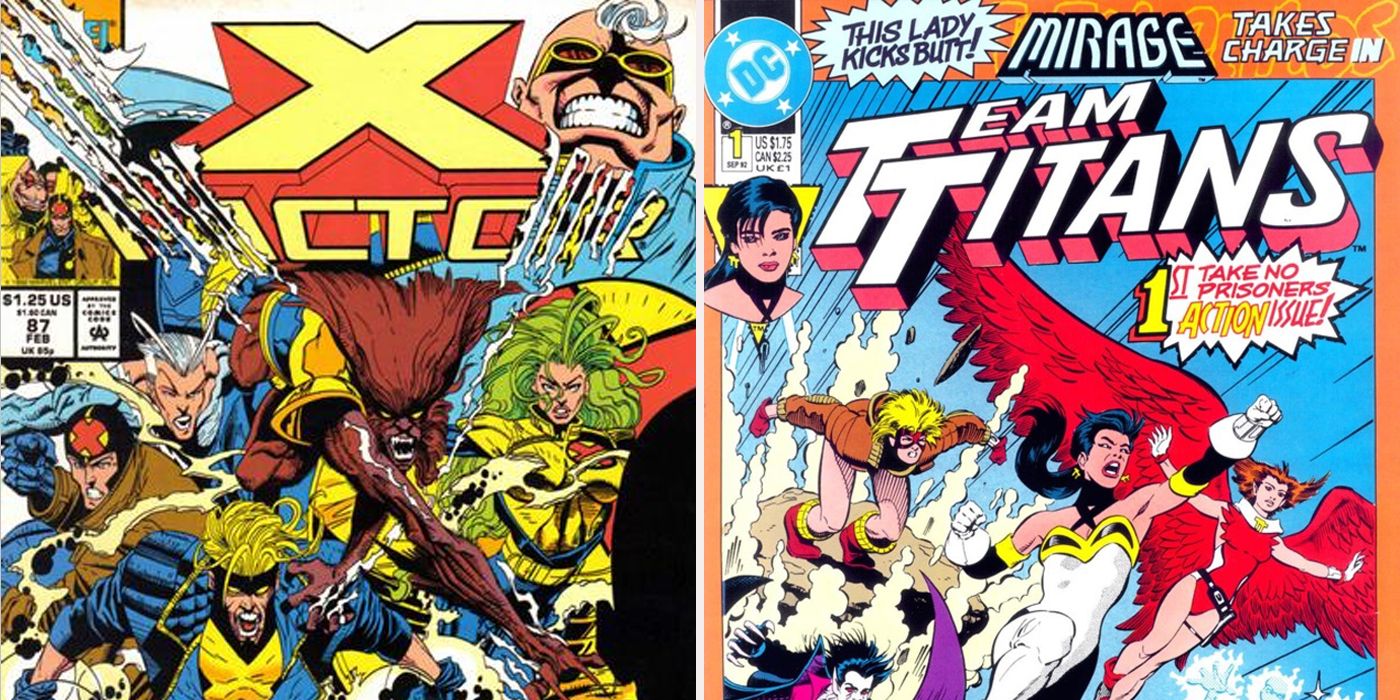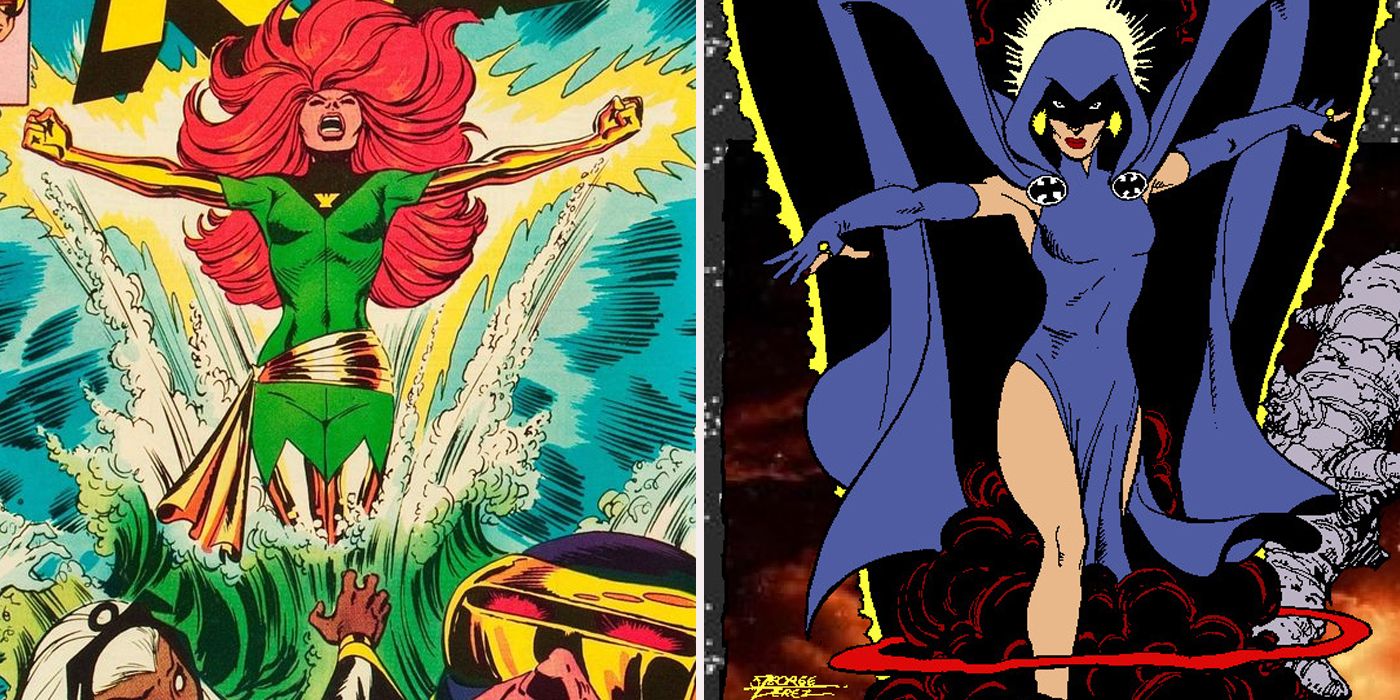Team-centric comic books are incredibly popular. Two of the most renowned superhero team books are Marvel’s X-Men and DC Comics’ Teen Titans. Once X-Men was re-launched in 1975 following Giant Size X-Men #1, the series and characters became a juggernaut of a brand. Over the years the X-Men became more beloved and well into the ‘90s when they reached the zenith of popularity rarely seen before or since. Similar to the X-Men, before their unparalleled rise to fame and fortune, the Teen Titans struggled to find an audience. Their early days were not the stuff of legend, but rather the stuff of dreary and kooky storytelling. The teenage superhero team almost fell into oblivion, but DC Comics tried giving it one last shot of adrenaline.
RELATED: Teen Titans: 15 Teams Ranked From The Absolute Worst To The Very Best
Under the tutelage of comic book maestros Marv Wolfman and George Perez, the Teen Titans were given new life, first in DC Comics Presents #26 and then The New Teen Titans. Virtually overnight the Teen Titans became one of DC’s best selling books as it captured an entire generation of readers. However, much of that success is owed to the X-Men and everything DC ripped off one of Marvel’s flagship titles. Today we’re looking at 15 ways the Teen Titans rippled off the Uncanny X-Men.
15 JERICHO THE MUTANT
In the DC Comics Universe, the idea of mutants is not a common one. Even today, you won’t hear mention of the word “mutant”; rather, the closest you’ll get is the term “metahuman”. With Marvel however, mutants are running all over the place and the word gets tossed around in nearly every other panel in an X-Men book.
So the idea of a rather well known DC character getting called a mutant in New Teen Titans is not only surprising, but clearly indicative that DC was trying to cash in on the mutant phenomenon that Marvel had jumpstarted. While today the psychic youngster Jericho is not referred to as a mutant, back in the ‘80s, the Teen Titan was called out as such on multiple occasions. Additionally, he was one of the few mainstream DC characters to be labeled as a mutant.
14 MADE INTO OUTCASTS
One of the defining characteristics of the X-Men is that they are outcasts. Despised by the majority of the planet’s population, the X-Men still fight to one day bring peace between humanity and mutantkind; the goal is an oftentimes bloody, uphill battle. At its core, the X-Men were meant to represent social injustices and open people’s eyes to the discriminations of the real world. The Teen Titans, at least originally, were made up of young, attractive, straight superheroes. Aside from contrived drama, they didn’t have much in the way of hardships.
Yet New Teen Titans, in trying to make the youthful superheroes more relatable, turned them into something of outcasts. You now had characters like Cyborg, Beast Boy, Raven, and Starfire who couldn’t walk down the street without people giving them dirty looks. It was a page taken right out of the book of X-Men.
13 KITTY PRYDE AND TERRA
Kitty Pryde was the youngest individual to join the X-Men. At the tender age of 13 she joined the superhero team and became something of a kid sister to the older heroes. Kitty Pryde grew into a valued member of the team and currently leads the X-Men. As for Tara Markov in Teen Titans, her history shares some striking similarities.
She too joined the Titans at a very young age and readers thought, that like Kitty, she too had the potential for greatness and could turn into a little sister of sorts. Sure, she was a little moody every once in a while, but who wasn’t in The New Teen Titans? Little did readers know, that all similarities ended there as Marv Wolfman plotted from the beginning to turn Terra into a traitor and eventually kill her off.
12 REVAMPING A TEAM NOBODY CARED ABOUT
It’s easy to think back on the X-Men fondly and believe they have always been a successful comic book for Marvel; that’s not the case. At best, the original X-Men series was met with a lukewarm reception at best. Despite Stan Lee and Jack Kirby working in tandem, the series lasted only 66 issues and ran from 1963 to 1970, before getting cancelled. Five years later, X-Men returned in Giant Size X-Men #1. Under the guidance of Chris Claremont in particular, the series flourished.
As for the Teen Titans, they first appeared in The Brave and The Bold #54 in 1964 and jumped around in various titles, with each series getting cancelled; nobody really cared about them. After vanishing for several years DC tried one last time with DC Comics Presents #26, introducing a new team. It was a success and New Teen Titans #1 carried on from there.
11 THE BROTHERHOOD
It wasn’t enough that the Teen Titans would come to model some of their heroes after a few X-Men, but they took the same approach with their villains. One of the X-Men’s most notorious ensembles of enemies was the Brotherhood of Evil Mutants. Led by Magneto, the Master of Magnetism, the team generally consisted of Mystique, Juggernaut, Toad, Sabretooth, Pyro, and before they turned good, Quicksilver and the Scarlet Witch. The Brotherhood was a thorn in the X-Men’s side. Again, DC and the Teen Titans were quick to rip-off Marvel’s mutant team with their Brotherhood of Evil.
While the Brotherhood of Evil started off the enemy for the Doom Patrol, eventually they were written as adversaries for the Teen Titans. There were several incarnations of the Brotherhood of Evil, and similarly to the Brotherhood of Evil Mutants, they too wanted world domination and were led by a madman.
10 PUTTING THEIR FEMALE CHARACTERS THROUGH HELL
In the annals of comic books there are many characters that suffer from convoluted histories. That said, there are perhaps none more famous for multiple origins and retcons like the female heroes Jean Grey and Donna Troy. The two women were put through hell like few other heroines, with writers going back and forth on how to make their stories even more tragic.
Yet Jean Grey was the first, the poster girl for tragedy. With her multiple deaths and nearly going insane and destroying the universe, Cyclops and the rest of the X-Men could only suffer and watch the madness unfold. As for Donna, while in the early Teen Titans days she didn’t experience significant heartbreak, once DC saw Marvel’s success with torturing young, super-powerful women, they gave it a go by making Donna miserable beyond measure, giving her numerous backstories and killing people she loved.
9 TEAM (AND TEEN) DRAMA
One of the themes, aside from worldwide prejudice, that defined the X-Men was the teen drama. The original five X-Men -- Cyclops, Iceman, Beast, Angel, and Jean Grey -- were all teenagers when they started saving the world from Magneto. When they weren’t fighting evil mutants they were bickering, laughing, and doing everything people do. Once Uncanny X-Men started, the theme went up a notch. Team drama now took center stage. There were plenty of romances, bitter disagreements, and youthful angst to keep readers satisfied.
When Wolfman was writing New Teen Titans, the book suddenly revolved more around Robin/Dick Grayson and his relationships with his friends. Dick was constantly falling in and out of romantic entanglements with teammates Starfire and even Donna Troy, but so were characters like Beast Boy with Terra. The drama aspect of the X-Men worked, so Teen Titans followed suit and were fruitful in making it their own.
8 SUPERVILLAIN DADS
In the X-Men comics, it wasn’t exceptionally shocking to discover that the superhero mutants Quicksilver and the Scarlet Witch were the children of the villainous Magneto, the long-time nemesis to the X-Men. Despite the two siblings starting off on the wrong side of the law and serving their father, they eventually turned over a new leaf and would join the Avengers and even assist the X-Men on occasion.
In the New Teen Titans, the Titans’ primary antagonist is the legendary mercenary Slade Wilson aka Deathstroke, the Terminator. It should come as no surprise to anyone that some of his kids ended up joining the Teen Titans, which only added crazy family drama. DC realized the success Marvel had with a supervillian father and decided to try their hand at it; it worked out pretty well for them.
7 NIGHTWING/STARFIRE AND CYCLOPS/JEAN GREY
Following on the team romances, if Uncanny X-Men featured Scott Summers and Jean Grey constantly pining for one another, then the Teen Titans had to find their own pairing. They found it in Dick Grayson and Starfire. Scott was the leader of his mutant team with Jean pretty much his second in command. Highly respected amongst all their teammates their will-they-won’t-they played out for years; it was made especially difficult with Jean dying.
As for Dick and Starfire, Robin/Nightwing was the leader of the Teen Titans and was constantly torn about what he ought to do with his romantic interests. Despite being one of the centerpieces for the team and one of the book’s biggest draws, as readers wanted to know what would happen between the two, he and Starfire constantly broke up. It became something of a soap opera that audiences were more than happy to oblige.
6 THE LOGANS
Garfield Logan aka Beast Boy, or Changeling if you’re feeling fanciful, originally wasn’t a member of the Teen Titans. Rather, he was a member of the eclectic Doom Patrol. Yet, similar to Doom Patrol, Beast Boy fell away into the ether…at least for a time. Flash-forward to Marvel’s The Incredible Hulk #181 and the world was introduced to the feral mutant known as Wolverine (Logan).
From there, Wolverine moved on to join the X-Men in Giant Size X-Men #1 and it shot him to greater popularity. DC tried a similar approach with Beast Boy. When the new Teen Titans roster was cemented, Beast Boy, a character who’d been on one team already, joined the teenage heroes. While he didn’t garner nearly as much success as Wolverine did, DC did try to push his character and make him popular. To their credit, Beast Boy is looked at fondly.
5 SIMILAR STORY STRUCTURE
Before the Teen Titans made it big, their early days in The Brave and the Bold and Showcase Presents primarily featured the young heroes helping out other teenagers with little problems. Granted, they fought bad guys along the way, but their villains were incredibly goofy and one-dimensional. The problem was that Teen Titans stories tried too hard to appeal to a young demographic, embracing youth culture of the ‘60s and incorporating people like Bob Dylan and the Beatles into the stories. Ultimately, that wasn’t what people wanted to read.
Creators Marv Wolfman and George Perez, when it was their turn with The New Teen Titans, took a completely different approach. Modeling the book on what can only be considered the formula that made Uncanny X-Men successful, the stories now revolved around team romances, inner turmoil, and dramatic battles. Like with the X-Men, it worked wonders.
4 FLESHED-OUT CHARACTERS
It was easier to write comics in the old days. It didn’t matter what character(s) you were writing, things like personality and consistency didn’t matter terribly much. Plenty of the early X-Men and Teen Titans stories suffered from, sorry to say, rather bland storytelling and character development. Of course these comics introduced us to some spectacular heroes, villains, and concepts, but it was only after Giant Size X-Men #1 that the mutant superhero team finally started fleshing out their characters more and more and giving each team member their own distinct personality.
The Teen Titans, when they got pulled out of obscurity, were given a similar treatment. Looking at other team hero books, i.e. Uncanny X-Men, the competition and the times both demanded more concrete storytelling. The Teen Titans went from bland to engaging in short order.
3 SO MANY SPIN-OFFS
Uncanny X-Men continues on to this day; it didn’t take long for Marvel to realize the golden egg they were sitting on. To that end they started pumping out a myriad of X-Men-related books including X-Men, X-Factor, Generation X, New Mutants, and countless others. Not wanting to be left in the dust, DC tried the same approach with the Teen Titans. You got Titans, Young Justice, Team Titans, Tales of the Teen Titans, and the list went on.
The many spin-off approach worked for the X-Men, as during the ‘90s readers had mutant fever, unable to get enough of the outlaw heroes. You even got about a million Wolverine titles, as the popular mutant became overexposed. Yet what’s good for the goose is not always good for the gander. The Teen Titan spin-offs didn’t share the same level of endearment. Rather, sales dipped and readers once again lost interest.
2 RAVEN AND JEAN GREY
One of the new additions to the New Teen Titans roster, Raven was dark, brooding, and incredibly powerful. Without a shadow of a doubt, it’s easy to see the bits and pieces DC took from Jean Grey and applied to Raven. With Jean’s enormous popularity, it was everything DC’s creators could do to think of female superheroes who might acquire the same level of popularity.
Firstly, and most simply, when you look at various covers, the two characters are modeled strikingly similarly. You have the iconic Uncanny X-Men cover of Jean flying out of water, surrounded by the power of the Phoenix. On The New Teen Titans cover you have Raven brandishing her abilities similarly, surrounded by her power; it’s also a giant bird. Like Jean, Raven went through several transformations and constantly worried about keeping her powers in check. Also, they both have bird-themed names. Coincidence? Probably not.
1 SIMILAR COVERS
When Giant-Size X-Men #1 hit the scene in 1975, it made a tremendous splash, the likes of which have rarely been seen in comics. Written by Len Wein and with artwork by Dave Cockrum, the issue paved the way for every other X-Men story that followed. Yet it was the cover that got copies flying off the newsstands. It was bombastic, in your face, and just downright awesome. It was the perfect shock and awe cover that was needed to garner people’s interest in the X-Men once again.
When New Teen Titans #1 rolled around seven years later, the cover looked shockingly similar to another successful book…*ahem*. The set design is nearly the same, especially with the characters and how they’re charging the reader. Really, it’s impossible to overlook the “resemblance”.
Are there any other ways the Titans stole from the X-Men? Let us know in the comments!

